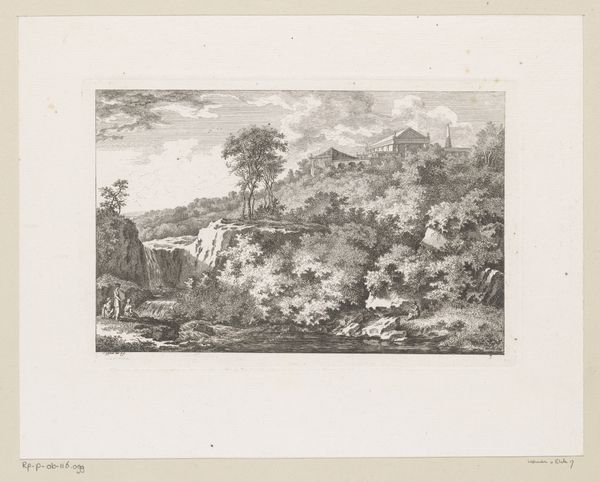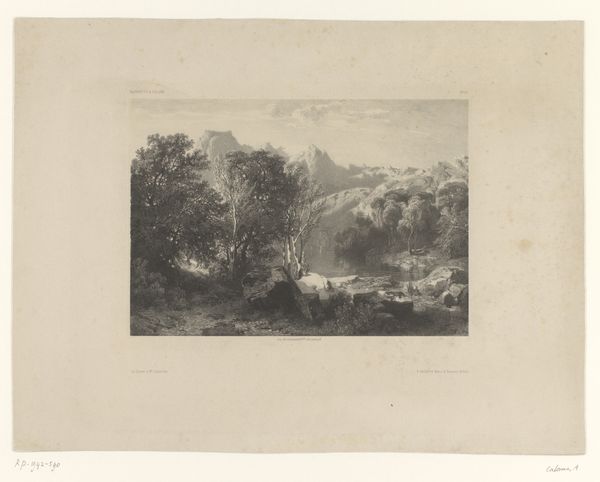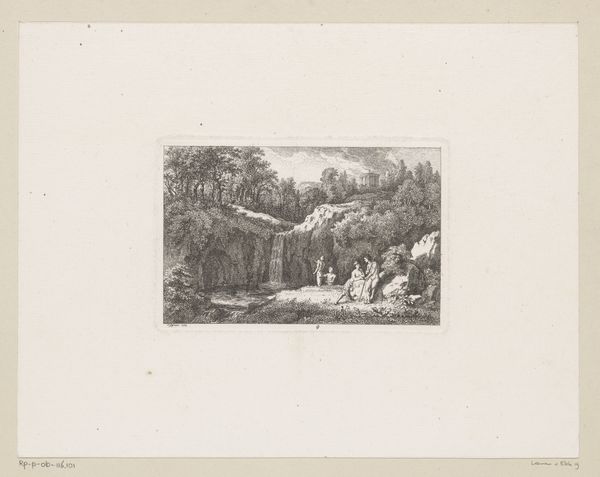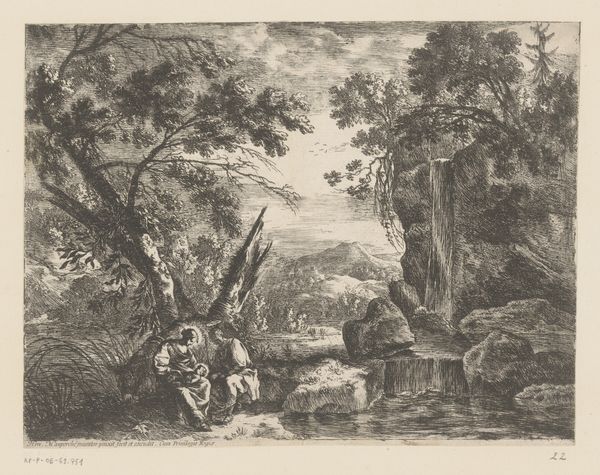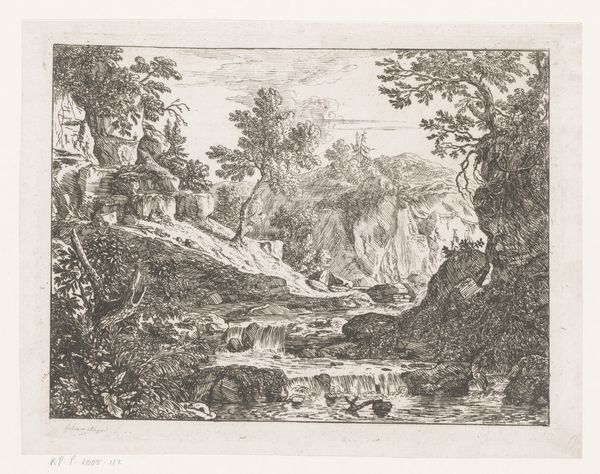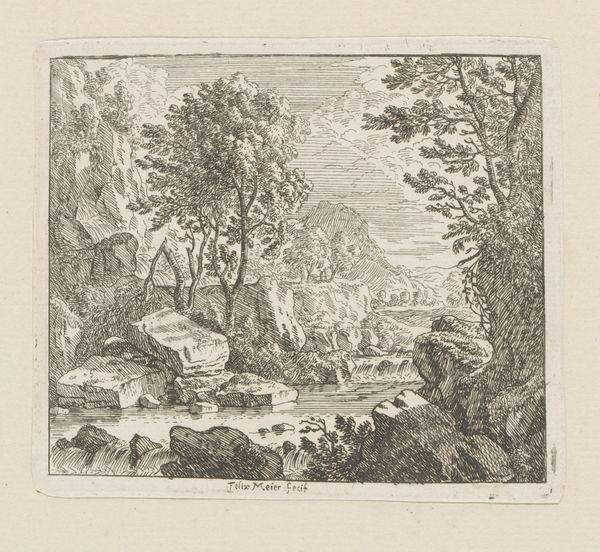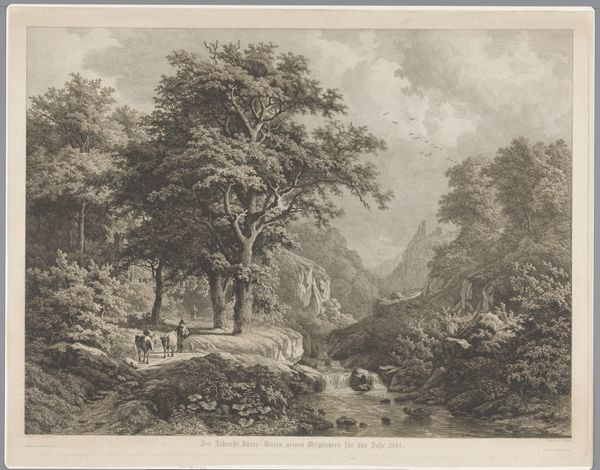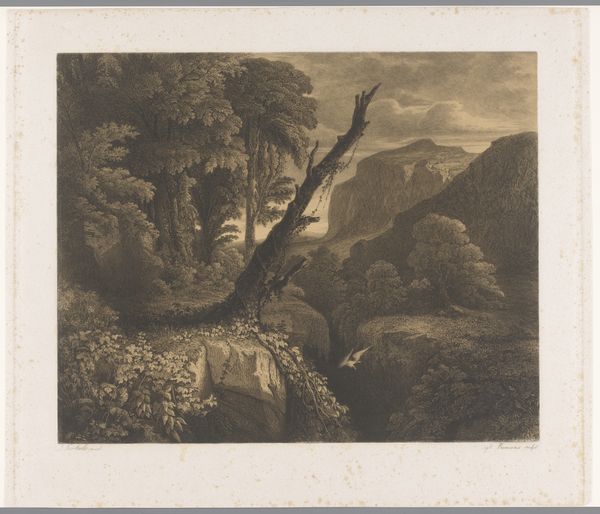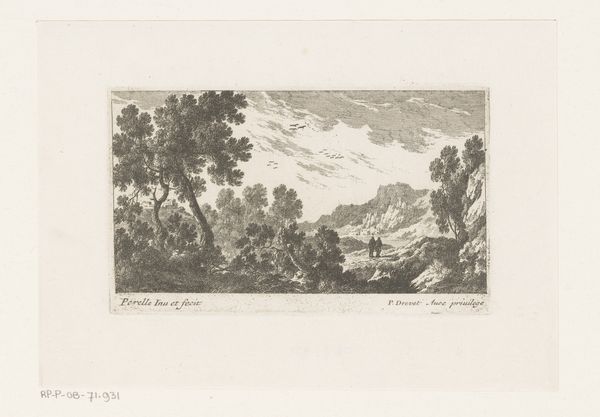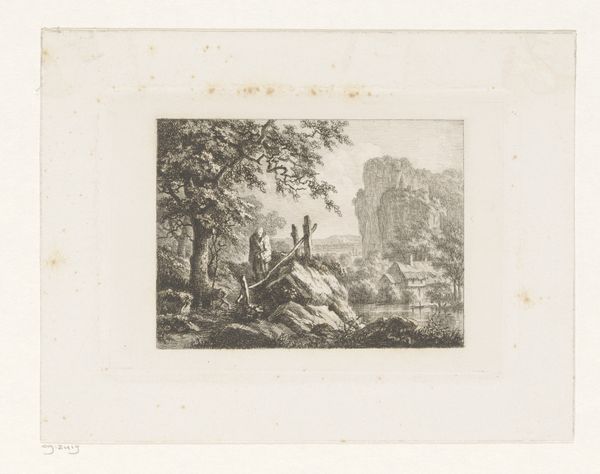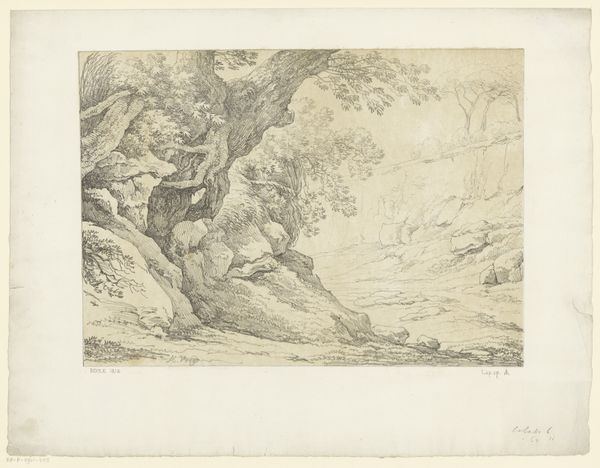
print, engraving
# print
#
landscape
#
figuration
#
romanticism
#
history-painting
#
engraving
#
monochrome
Dimensions: height 313 mm, width 460 mm
Copyright: Rijks Museum: Open Domain
Curator: Johann Georg Schinz created this engraving, "Actaeon met zijn honden in de wildernis," or "Actaeon with his Dogs in the Wilderness," around 1822. The monochrome print presents a detailed landscape scene from classical mythology. Editor: My initial reaction is one of unease. Despite the romantic style, the scene feels claustrophobic, almost foreboding. The stark contrasts contribute to a dramatic sense of inescapable destiny. Curator: It certainly embodies Romanticism’s fascination with the sublime. Schinz places the myth of Actaeon within a natural setting, heightening the drama. Actaeon, a hunter, is famously punished by Diana, or Artemis, for seeing her bathing. She transforms him into a stag, and he’s then hunted down by his own hounds. Editor: Precisely. And notice how Schinz frames the narrative within a deep perspective that visually pushes us into the hunter's demise. The figure, seemingly relaxing beside his dogs in the foreground, occupies such a tiny, precarious corner of the landscape, it seems to visualize humankind's negligible place in this world. The gaze gets pulled into the wilderness. Curator: Considering the sociopolitical backdrop of early 19th-century Europe, prints like these fulfilled multiple roles. Beyond artistic merit, they served as vehicles for disseminating classical narratives among a growing middle class. The history-painting aspect aligns with a desire for education and refinement. Editor: Yes, but what lessons did this type of tale really teach? To me it also speaks to larger themes of power and punishment, especially when considering its implications across gender. Actaeon's punishment underscores a cultural narrative that attempts to legitimize control over women’s bodies and autonomy through brutality and dehumanization. His fate is violent because he witnesses Diana. Curator: It’s compelling to consider these intersections of history, gender, and social control reflected even within this small monochrome print. The layers of historical context really enrich the visual narrative. Editor: Absolutely. Analyzing how art mediates and mirrors historical oppressions alongside the mythmaking, reveals the print's complex sociopolitical tapestry.
Comments
No comments
Be the first to comment and join the conversation on the ultimate creative platform.
